Kia has revealed it’s first plug-in hybrid model for the UK - the Optima PHEV.
Hybrid
Electric, Hatchback, Hybrid, News, Technology
Record high for Electric cars sales
Motorists in the UK are buying more electric vehicles than ever - with latest figures confirming continual quarterly rises in plug-in car uptake.
Hybrid, News, Saloon, Estate Car
Volkswagen confirms Passat GTE pricing
Electric, Hybrid, News, Luxury, Saloon
BMW confirms pricing for new plug-in-hybrid 7 Series
Kia launches Niro Hybrid Crossover
Combining the styling of a compact crossover with the efficiency of a hybrid vehicle, the all-new Kia Niro is now on sale, priced from £21,295.
Hyundai confirms new IONIQ pricing
Hyundai has officially announced the pricing and specification of IONIQ - the world’s first car to offer three electrified powertrains.
Concept Car, Motorsports, Sports Car, News, Hybrid
Heartbreak for Toyota as Porsche snatch Le Mans victory
Electric, Hybrid, Hatchback, News, Technology
Volkswagen teams up with Zipcar for London launch of Golf GTE
Volkswagen is joining forces with the world’s largest car-sharing network, Zipcar, to launch the ultra-low emission Golf GTE in the UK’s capital city.
Events, Hybrid, News, Family Car, Hatchback
UK debut for all-new Hyundai IONIQ
The all new Hyundai IONIQ Hybrid debuted at a the Society of Motor Manufacturers & Traders (SMMT) Test Day.
Coupe, Hybrid, Sports Car, Supercars
BMW expands i8 colour palette
Concept Car, Hybrid, News, People Carrier, Technology
Google teams up with Fiat-Chrysler group
The Google Self-Driving Car Project and Fiat-Chrysler Automobiles (FCA) have announced a first-of-its-kind collaboration.
Family Car, Hybrid, Hatchback, News
Euro NCAP adds autonomous emergency braking
Crash test experts Euro NCAP has added an autonomous emergency braking (AEB) test to its rating system.
Concept Car, Hybrid, Motorshow, SUV, News
Volkswagen Beijing Concept SUV teased
Electric, Hybrid, Hydrogen Fuel Cell Car, News
Electric car sales reach record high
Uptake of plug-in cars reached a record high in the UK with more than 115 electric cars registered every day during the first quarter of 2016.
Celebrity, 4x4, Crossover, Electric, Family Car, Hybrid, News, SUV
Konnie Huq plugs Plug-in Mitsubishi Outlander
Electric, Hybrid, Motorshow, News, Hatchback
New Toyota Prius PHEV debuts in NY






The second generation of the Toyota Prius Plug-in Hybrid has debuted at the 2016 New York International Auto Show.
Offering improvements in its EV performance, in terms of driving range, power and maximum speed, the new model builds on the strengths of the latest generation Prius, introduced earlier this year.
The new Prius Plug-in’s Hybrid Synergy Drive powertrain features a larger, 8.8kW/h lithium-ion battery pack, increasing its driving range in EV mode as well as the potential driving range from a tank of fuel. Fuel consumption shows a marked improvement compared to its predecessor, with an estimated average figure of 202mpg, the best rating for any current plug-in hybrid on the market, says Toyota, producing a CO2 figure of just 32g/km.
Even when not running in EV mode, the Prius Plug-in will automatically favour its all-electric drive capability in situations where this can deliver higher efficiency than the petrol engine, most notably when driving around town and on shorter journeys.
The new plug-in hybrid system further minimises use of the petrol engine, even when accelerating quickly or using the cabin heater, with the adoption of a new battery-powered heating system that improves efficiency in cold weather, and the world’s first heat pump air conditioning system with gas injection.
As a result of these advanced technologies, the new car can be driven at speeds up to 84mph while still in EV mode. The potential EV driving range is more than 30 miles, around twice that of its predecessor, and charging the battery should take around two hours and 20 minutes.
The hybrid system’s 1.8-litre Atkinson cycle VVT-i engine also plays an important role in its overall efficiency. Its large-volume exhaust gas recirculation system, improved combustion efficiency and innovative measures to manage heat and reduce friction have improved its thermal efficiency to 40 per cent, a world-best figure for a mass-produced petrol engine.
The Prius styling presents a ‘chiselled profile and edgy character lines’ according to Toyota, and has a more ‘road-hugging’ look and a lower centre of gravity. Compared to the current model, it is 165mm longer, 15mm wider and sits 20mm lower to ground.
The car’s 0.24 drag coefficient (Cd) is expected to be among the lowest of any production saloon, achieved with a number of advanced design features such as the “double bubble” tailgate glass and a grille shutter which automatically closes when airflow is not needed to cool the radiator.
Weight has been kept to a minimum through extensive use of high-tensile steel in the bodyshell, aluminium for the bonnet and, in a first for a mass-produced car, a carbon fibre reinforced plastic (CFRP) tailgate. Its status as an individual model within the Prius range is confirmed by a unique lighting signature, created with four-lamp LED projector headlights and LED tail lamps.
The interior features a four-seat layout, built around a full-length centre console. The instrument cluster has dual 4.2-inch full colour TFT screens while the centre cluster has a floating design and an eight-inch touchscreen for easy operation of audio and navigation functions, including flick actions to scroll through the different displays.
A sound-insulating laminated windscreen and front door glazing creates, says Toyota, an ‘exceptionally quiet’ cabin environment, aided and abetted by a quieter S-Flow automatic air conditioning system which has been made smaller and lighter and uses less power.
The Prius Plug-in will be offered with Toyota Safety Sense, equipping it with integrated active safety and driver assistance functions including a Pre-Collision System with Pedestrian Detection and Autonomous Emergency Braking; Lane Departure Alert with Steering Assist; Full-Speed Adaptive Cruise Control with full stop technology; and Automatic High Beam headlight operation. A Blind Spot Monitor and Rear Cross Traffic Alert will also be available.
The new Prius Plug-in will be available in UK showrooms from the end of this year.
City Car, Electric, Hybrid, News
Hyundai reveals IONIQ line-up in Geneva

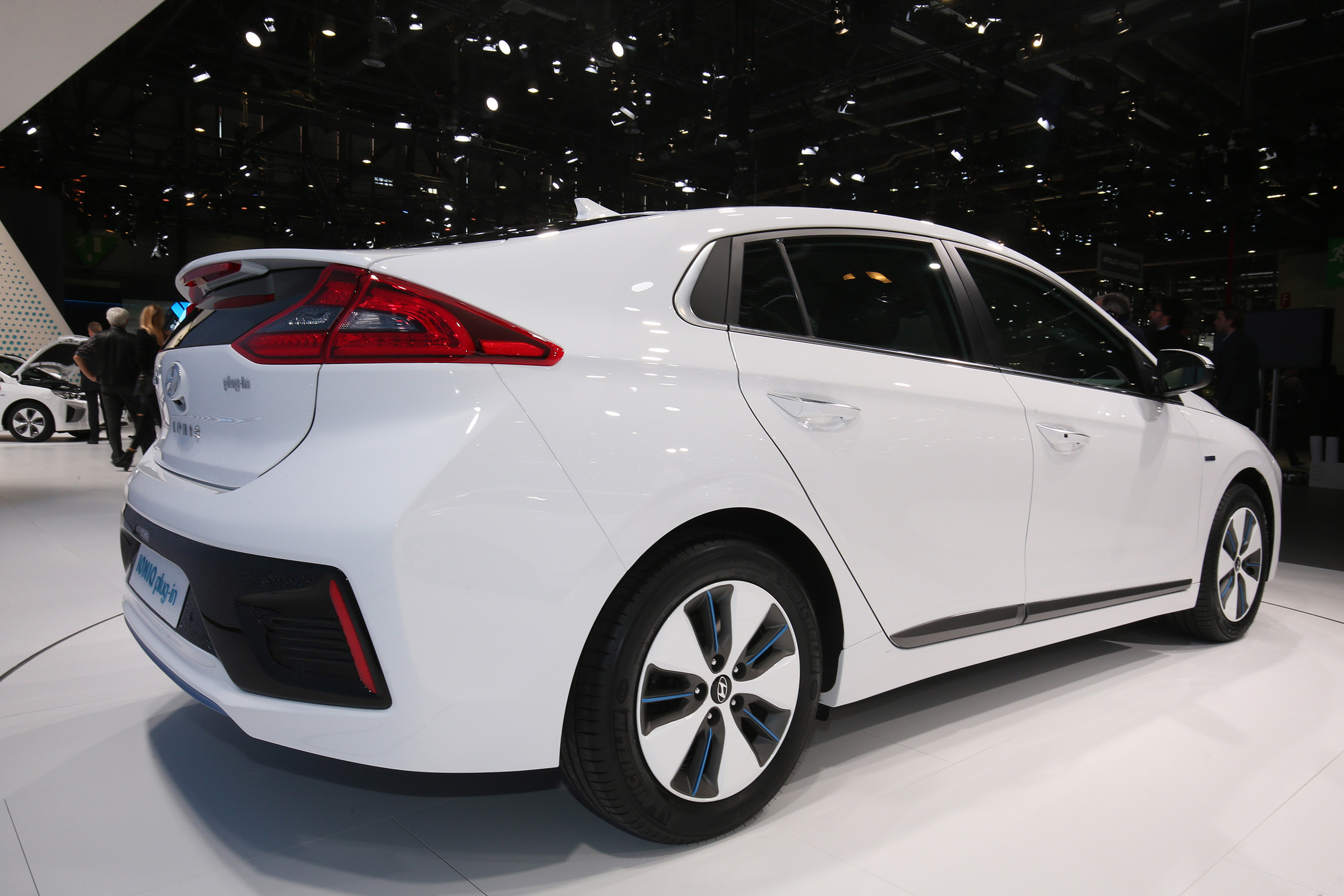
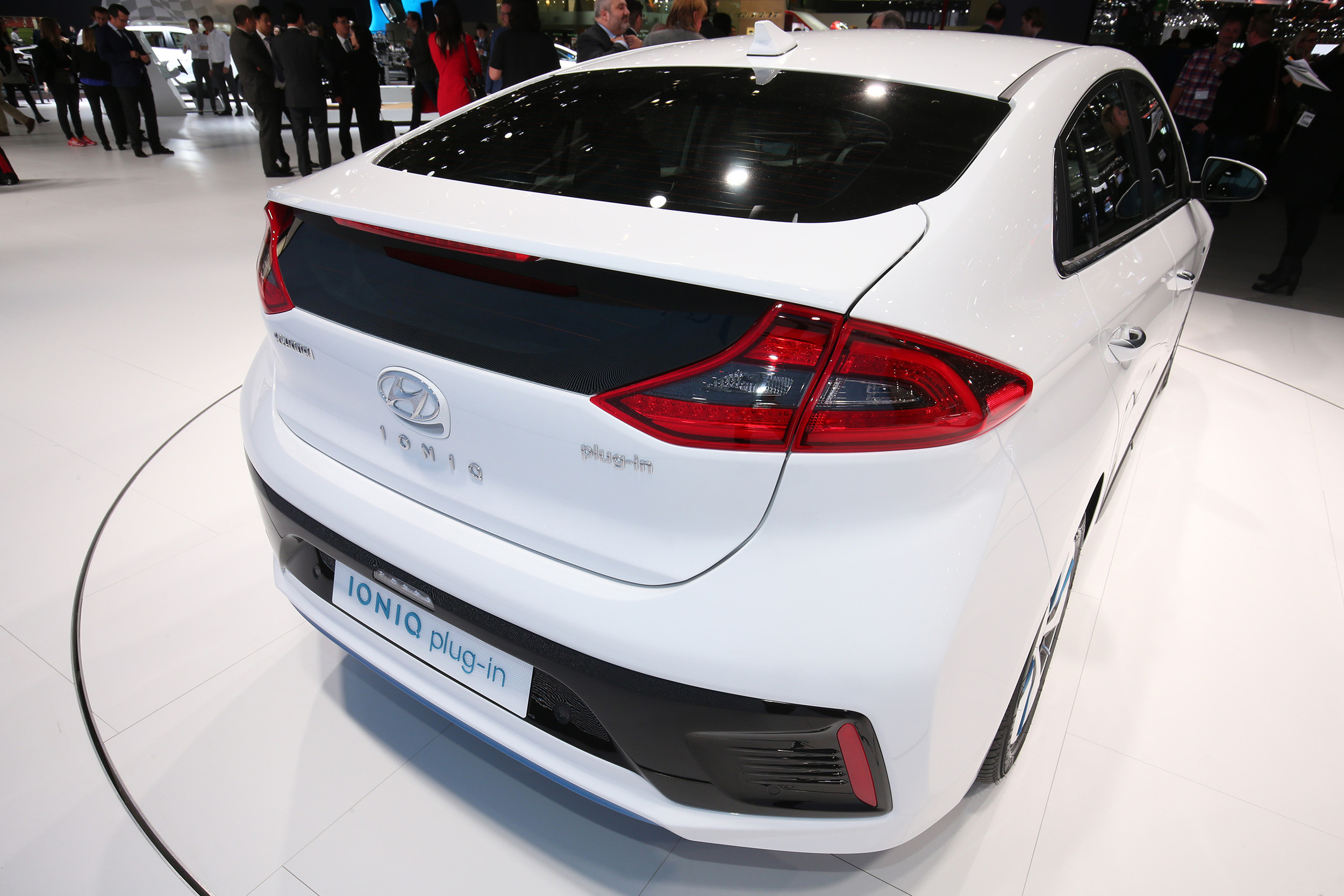
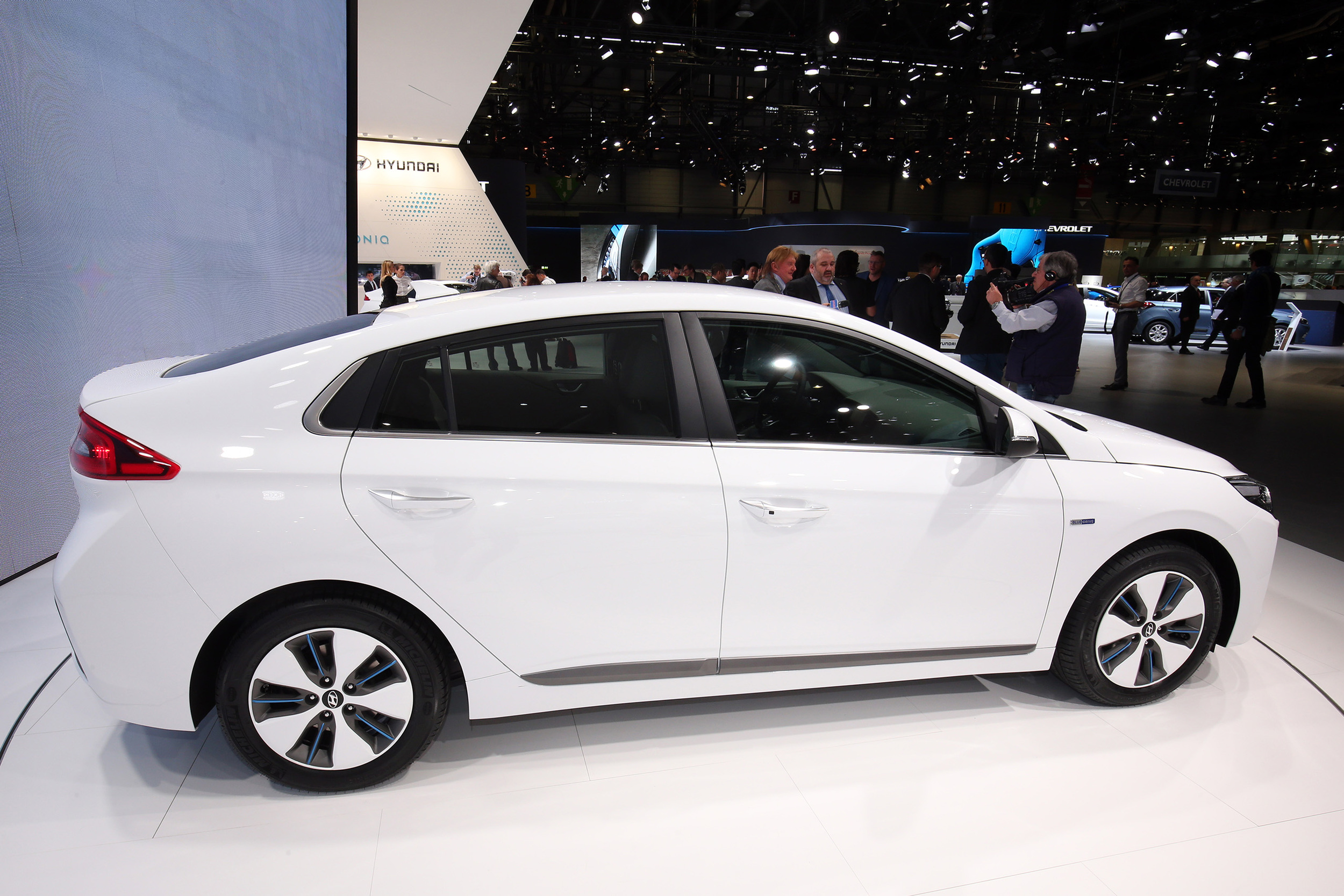
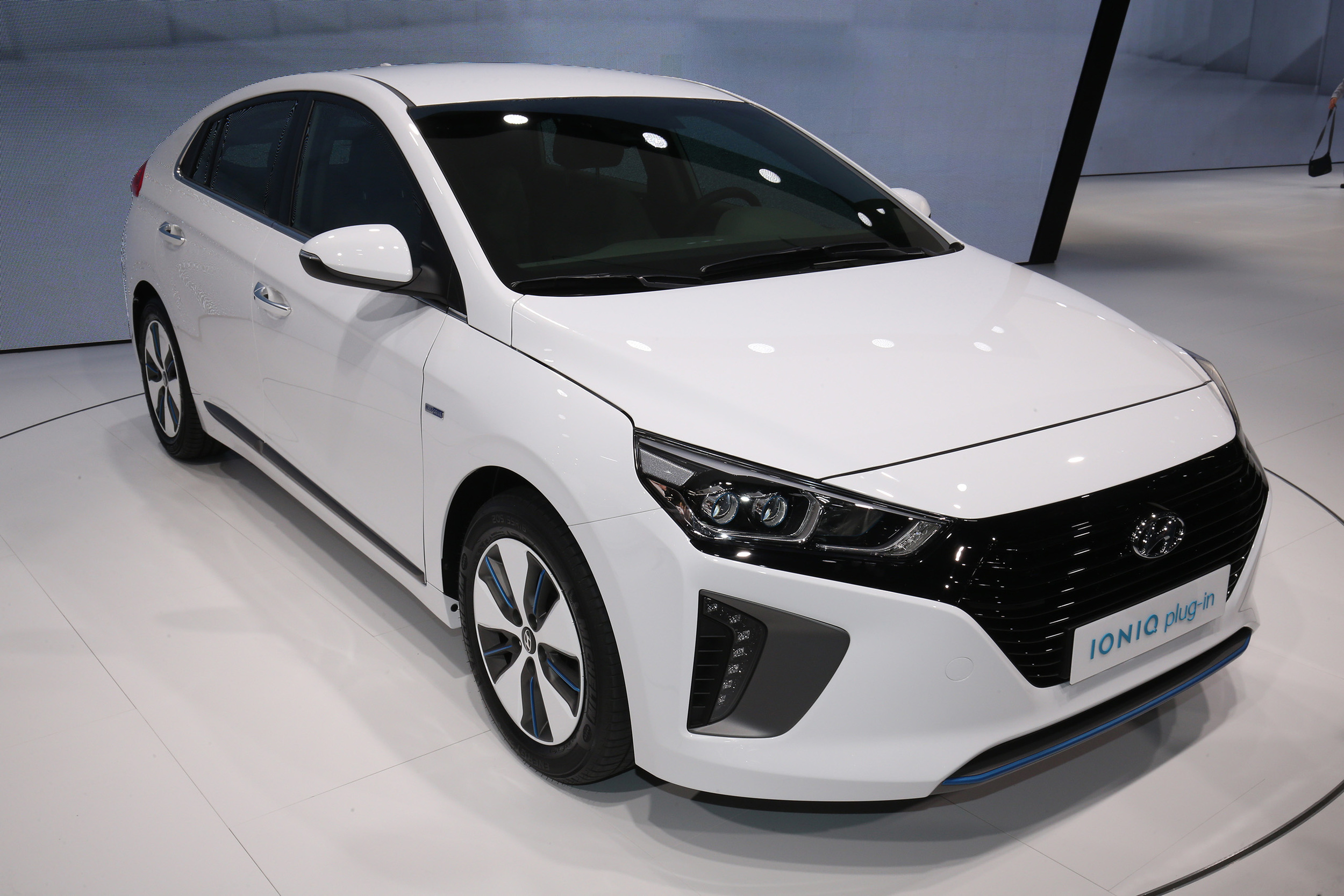
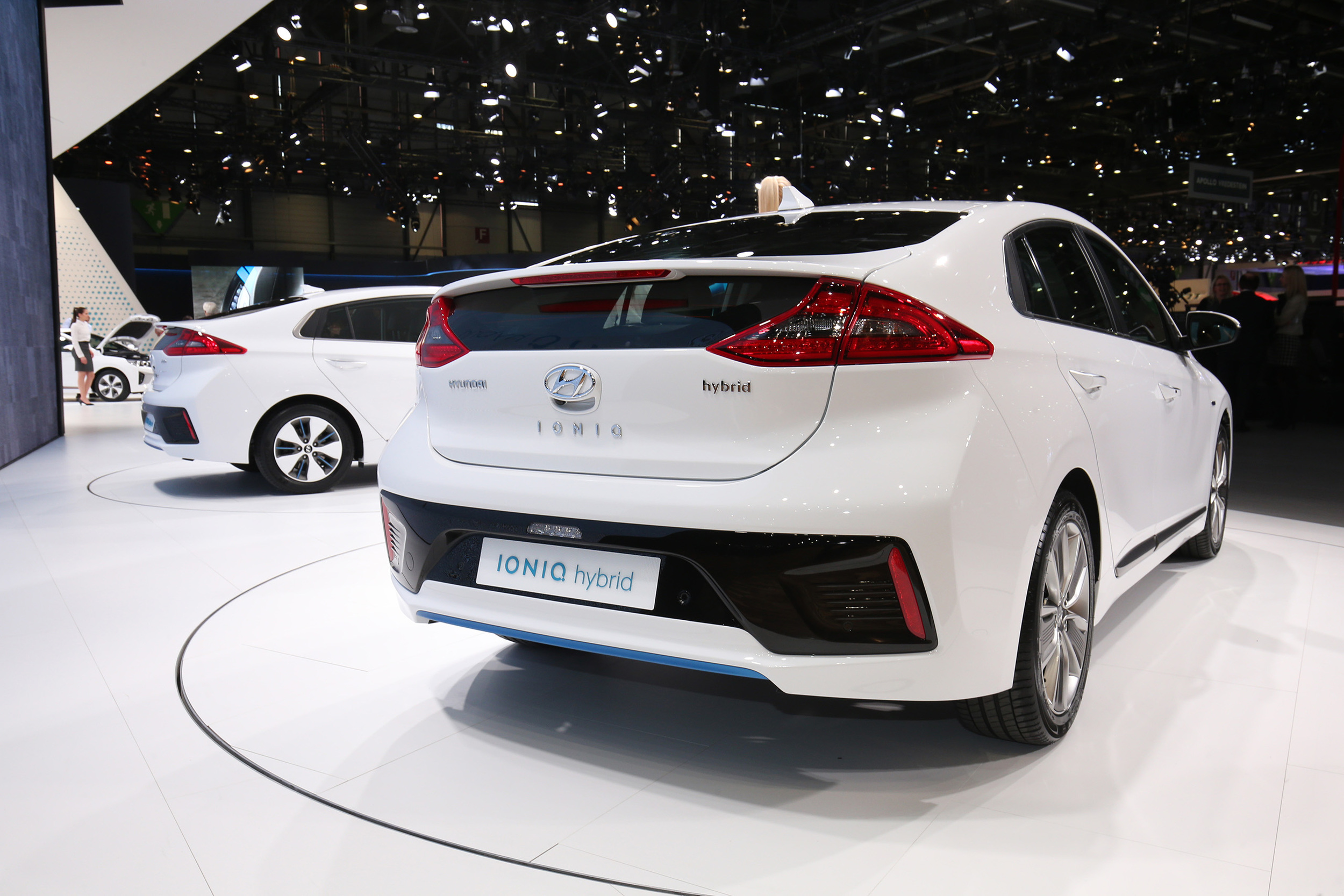
Hyundai pulled the covers off its all-new IONIQ electric line-up.
Consisting of the IONIQ Hybrid, IONIQ Electric and IONIQ Plug-in, the IONIQ becomes the world’s first model offering three electrified powertrains, says Hyundai. With the intention to offer low- to zero-emission mobility to everyone, Jochen Sengpiehl, Vice President Marketing at Hyundai Motor Europe, said: “IONIQ is an important step forward for our brand in Europe. We are bringing a unique new approach to e-mobility, with no compromise on great design, driving pleasure and new connectivity features. And we’re making it accessible to more customers, further extending our product line-up.”
The IONIQ Hybrid and IONIQ Plug-in both feature the new Kappa 1.6 GDI, direct injection petrol, four-cylinder engine with a thermal efficiency of 40 percent, delivering 105 PS and 147 Nm of torque. The engine has been tailored to the hybrid application and is combined with the direct responding, smooth shifting six-speed double clutch transmission. The mated electric motor enables pure electric driving and delivers instant torque as the chassis with rear multi-link suspension ‘greatly enhancing driving dynamics’.
The IONIQ Hybrid’s electric motor delivers 32 kW (43.5 PS) with maximum torque of 170 Nm, powered by a lithium-ion-polymer battery with 1.56 kWh capacity positioned under the rear seats. In combination with the 1.6-GDI engine, IONIQ Hybrid offers a system output of 103.6 kW (141 PS) rpm and up to 265 Nm of torque accelerating to a top speed of up to 115mph with targeted CO2 emissions as low as 79 g/km or lower (combined).
The IONIQ Plug-in can rely on over 31 miles of estimated pure electric driving range powered by the 8.9 kWh lithium-ion polymer battery. The 45kW (61 PS) electric motor together with the 1.6 GDI four-cylinder Kappa engine offer targeted CO2 emissions as low as 32 g/km.
The IONIQ Electric offers pure e-mobility through a 28 kWh lithium-ion polymer battery for an estimated maximum range of over 155 miles. The instantly available maximum torque of 295 Nm is delivered by the electric motor with a maximum output of 88 kW (120 PS) through the single-speed reducer transmission accelerating the car up to 103mph.
On the inside, ‘state-of-the art’ connectivity features include Android Auto, Apple CarPlay as well as TomTom live services and wireless charging of your smartphone. Furthermore, the driving experience becomes digital through the 7-inch TFT instrument cluster displaying all key driver information. Safety features include Autonomous Emergency Braking, Lane Keep Assist System, Blind Spot Detection, Rear Cross Traffic Alert and Smart Cruise Control ensures high safety levels for drivers and passengers alike.
All versions feature the sleek aerodynamic silhouette with a Cd value of 0.24 that complements the ‘soft lines’ and surfaces that trace the IONIQ’s outline.
Concept Car, Sports Car, Supercars, Hybrid, News
Italdesign unveils GTZero concept
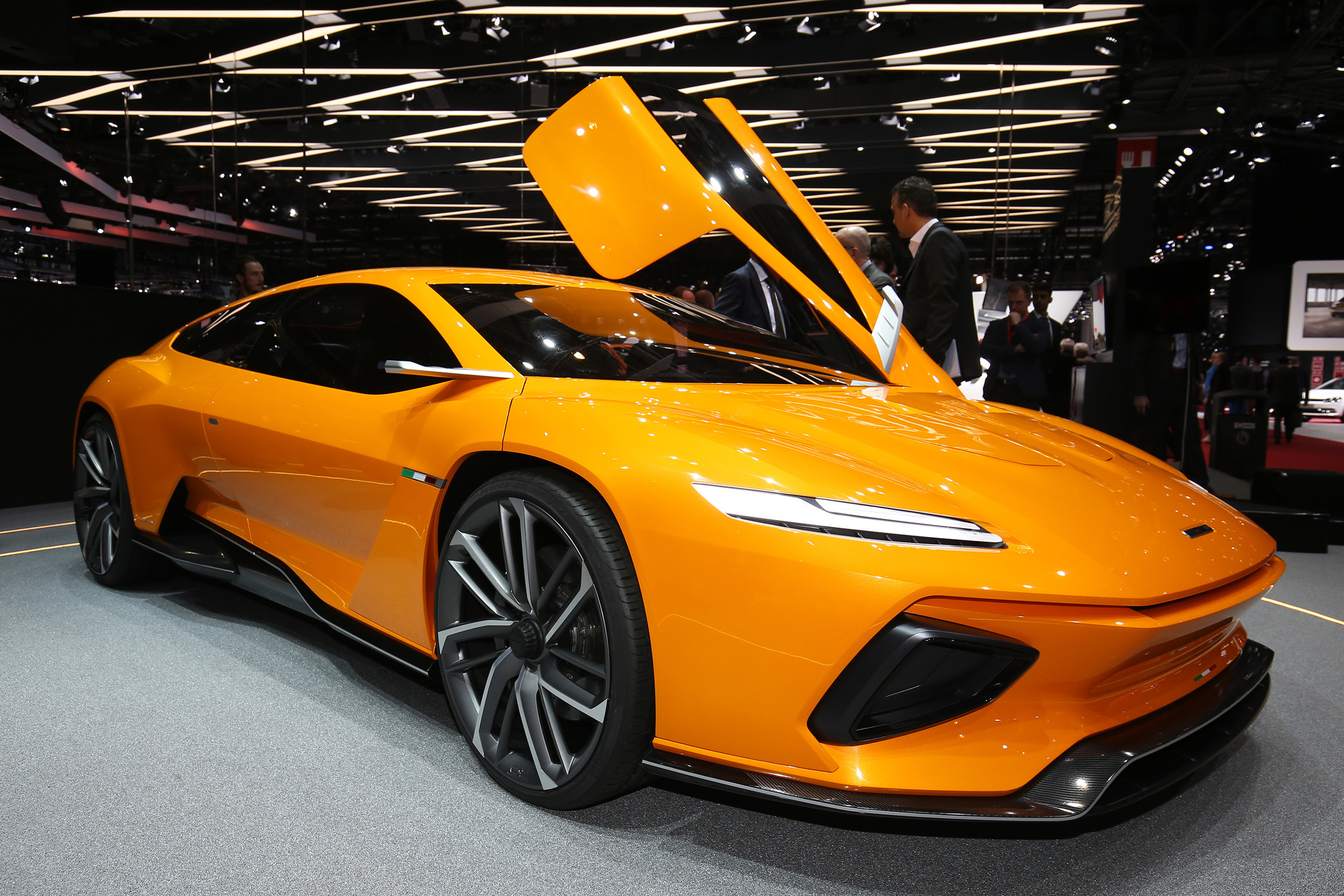
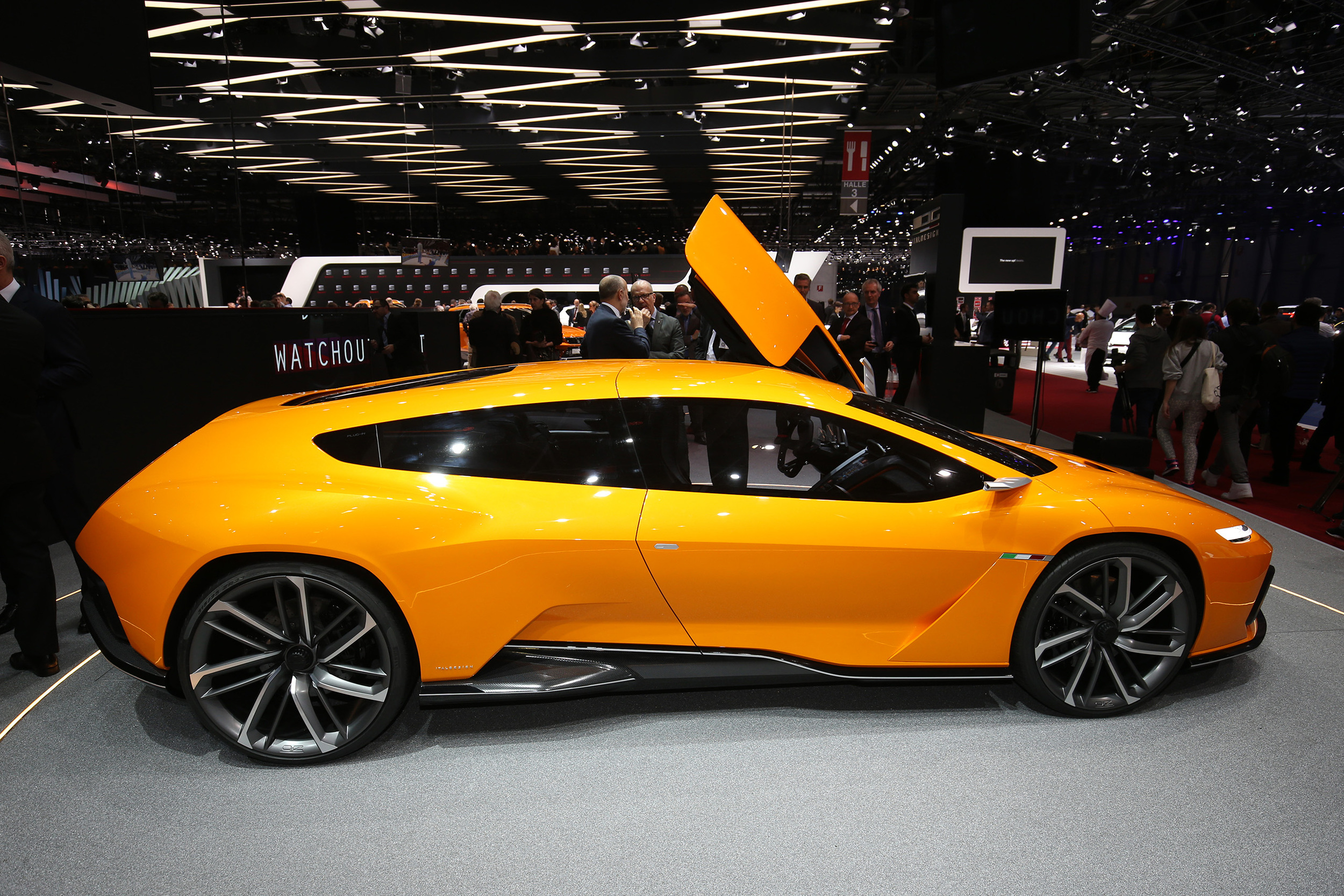
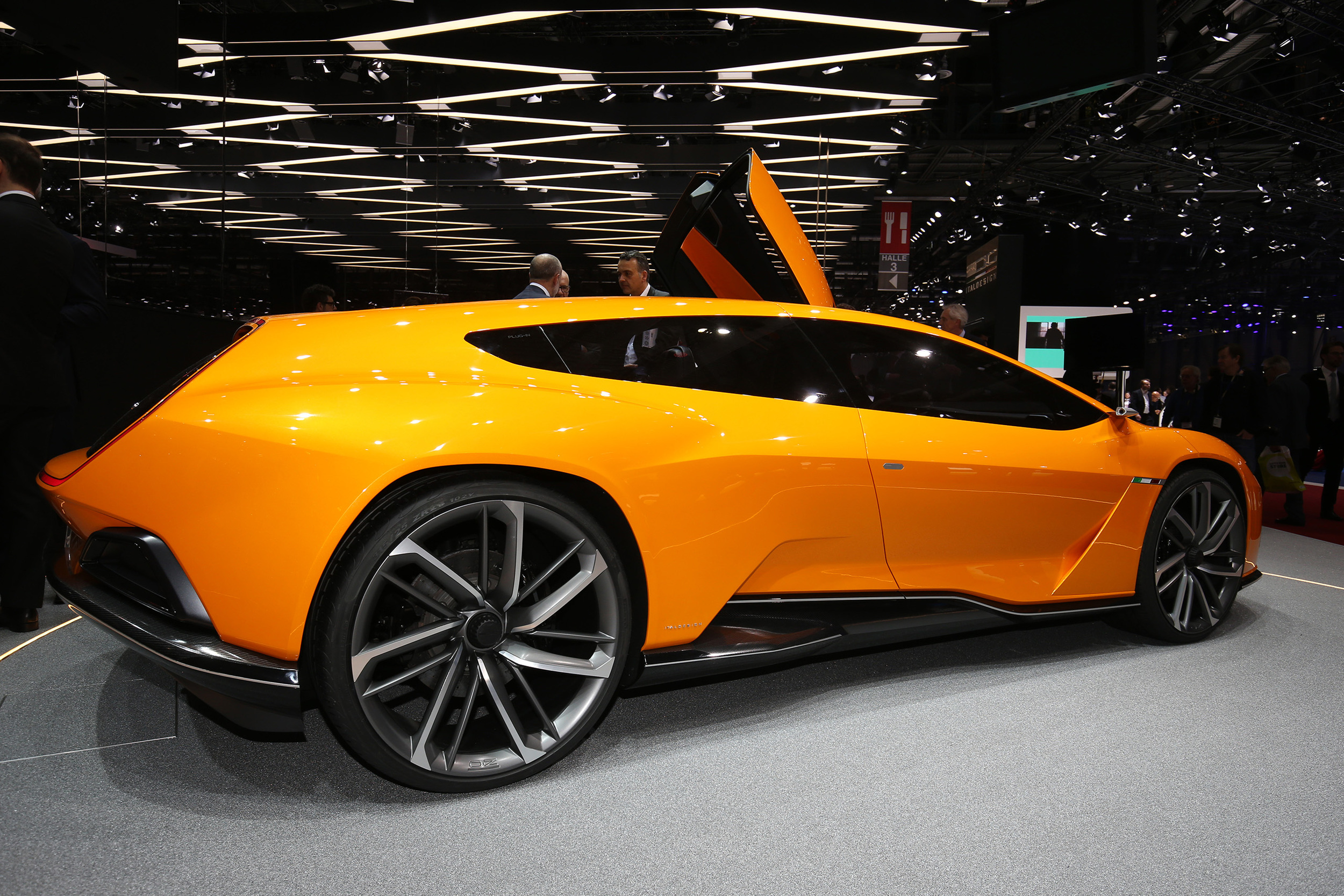
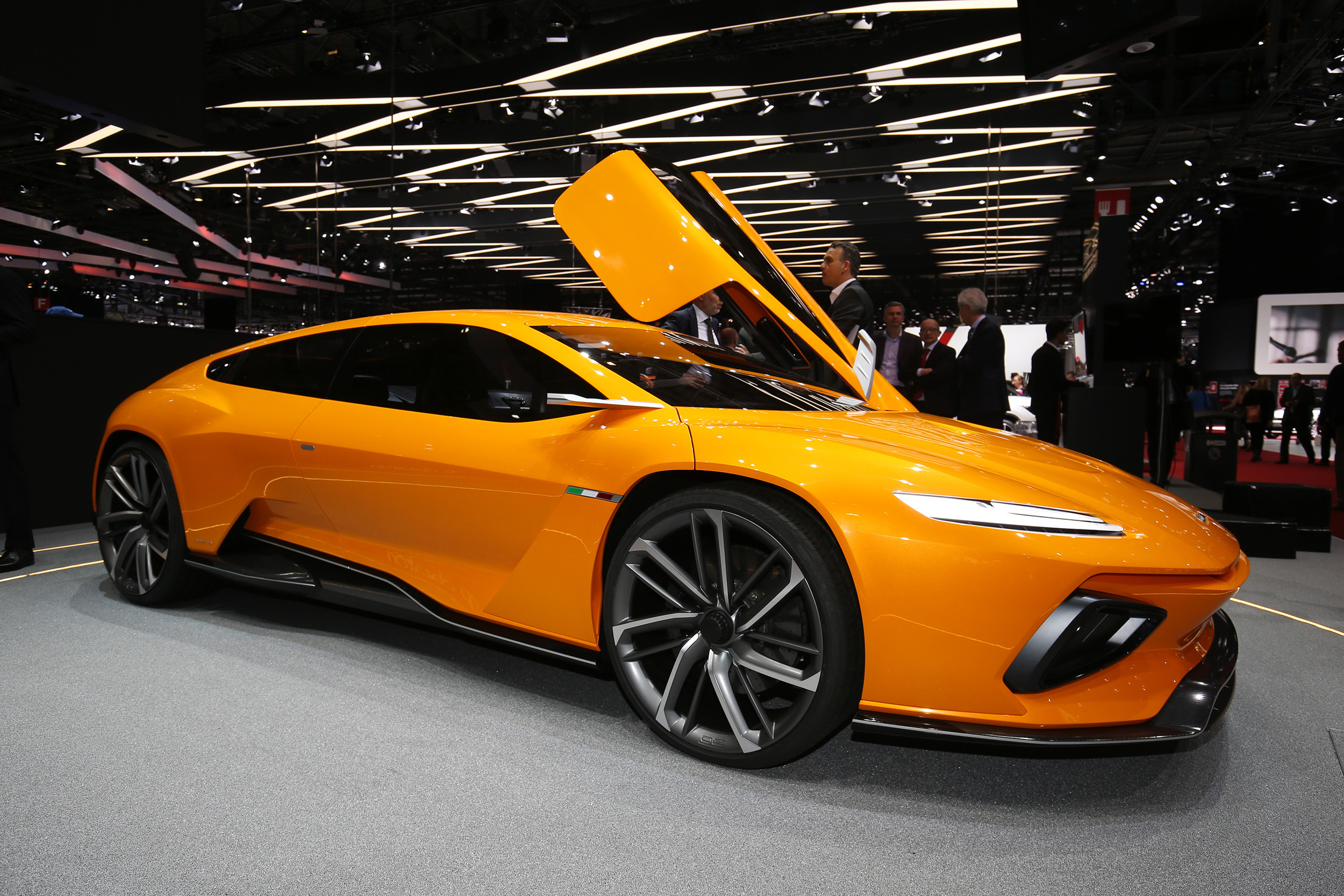
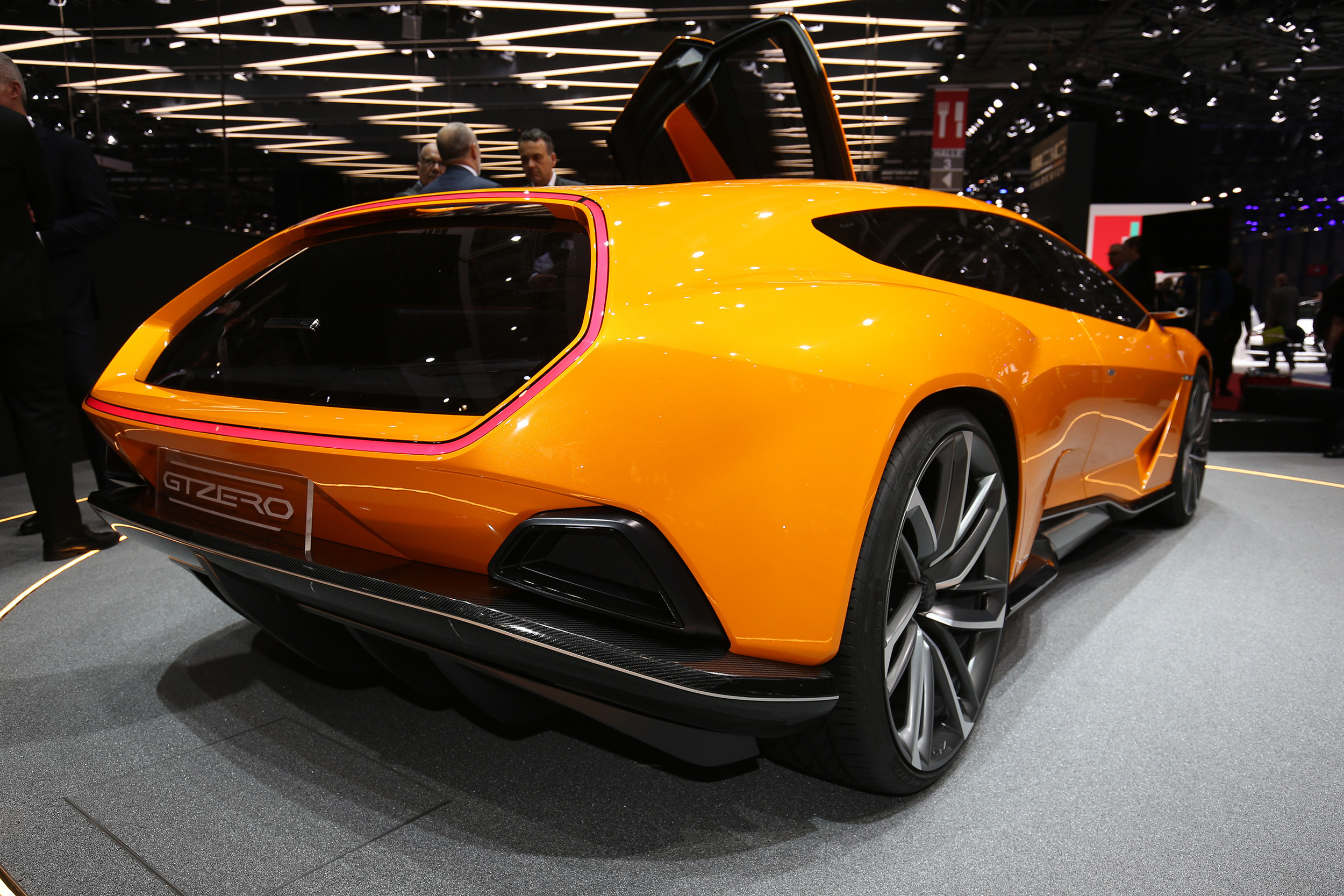
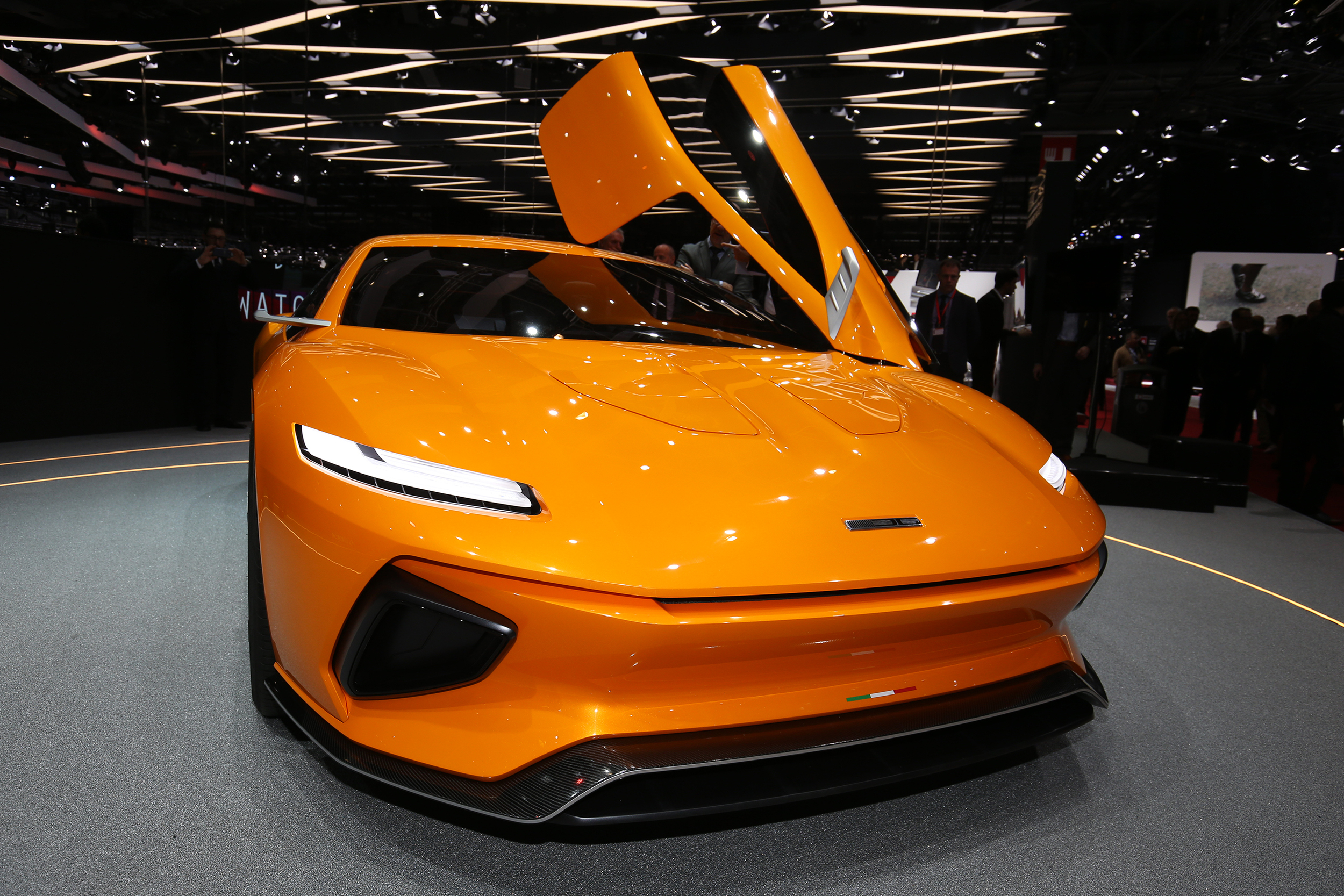
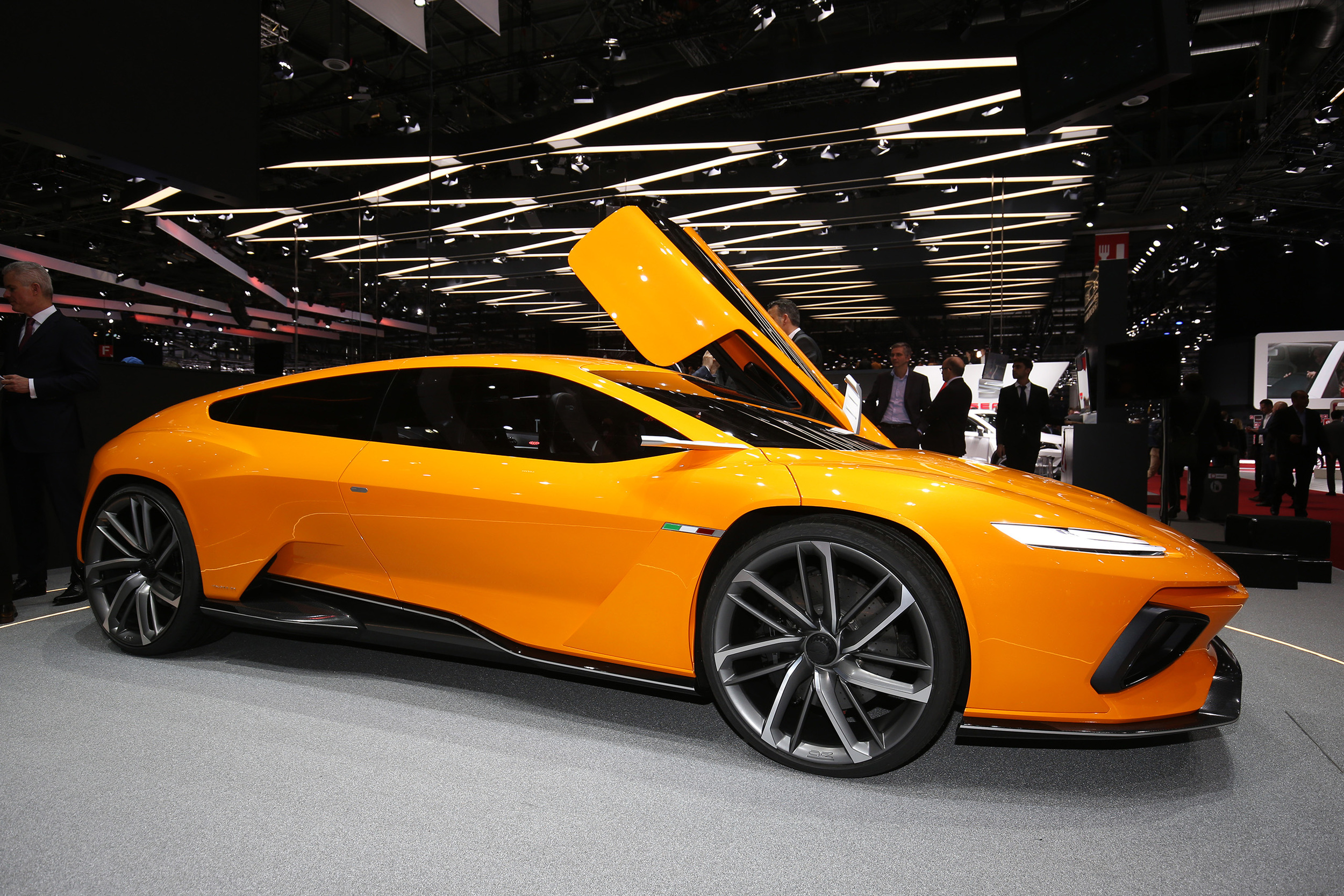
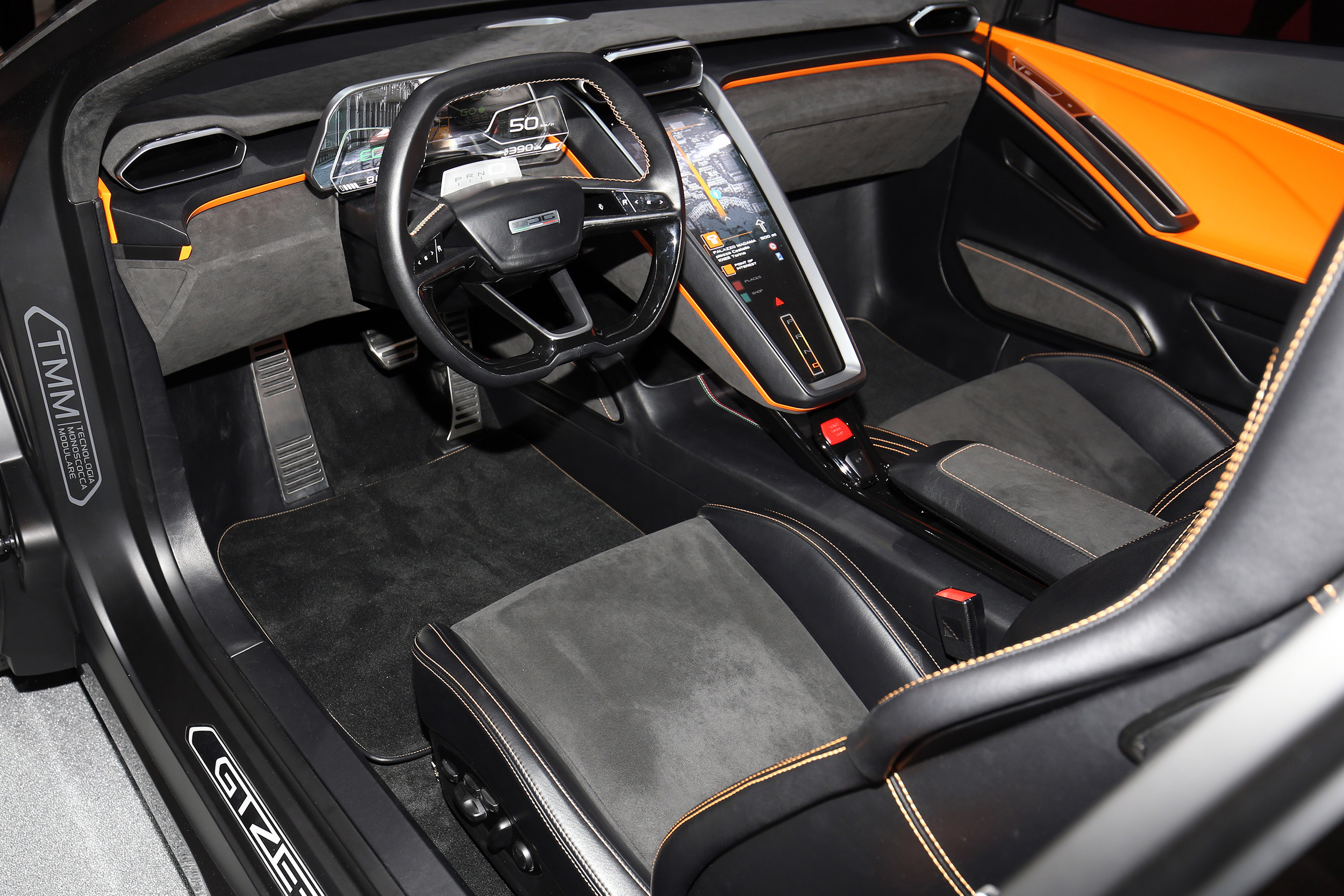

Italdesign has revealed a modern interpretation of the classic GT car with its GTZero.
The GTZero, presented in Geneva, is powered by three electric motors, two on the front axle and one on the rear - which is able to deliver an overall power output of 360 kW with four-wheel drive and four-wheel steering. Built on a modular monocoque carbon frame with integrated batteries, its top speed is limited to 155mph and it has a driving range of around 310 miles. 80 per cent of the charge is achievable in about 30 minutes.
The Gran Turismo’s sleek and dynamic profile is combined with a 'wide and comfortable' passenger compartment. The reduced rear overhang, elongated front and contained height convey its sporty nature, whilst the shooting-brake layout allows three bags to be packed comfortably in the rear luggage compartment and two more in the front one.
The GTZero was planned, designed and built at Italdesign’s headquarters in Moncalieri. The GTZero pays tribute to the nearly fifty years of history of Italdesign, recapturing several ideas from some of its historic concept cars. The active flaps on the bonnet are reminiscent of the 1997 Alfa Romeo Scighera, whilst the long bonnet, pronounced mudguards and pitched tail are a tribute to the 1995 Daewoo Bucrane; the sporty setup of the car ‘for family use’, on the other hand, brings to mind the Ferrari GG50.
The exterior lines flow from the wheels, which are 22” at the front and 23” at the rear, to the treatment of the body surfaces is both muscular, with the large wheel arches and bonnet elongated to create its sporty character, and wraparound, to ‘soften its aggressive feel’. The large air intakes and spoilers — solutions that are not merely aesthetic but functional as well — dominate the front and rear views and enclose active aerodynamic systems. At high speeds the spoilers come out to increase downforce and the air intakes open to increase aerodynamic flows. On the side, two slots close to the wheel arches stand out and help with brake system cooling.
The rear features a hexagonal shape large rear window, which also acts as an access door to the luggage compartment. The geometrical shape is framed by a long LED which runs right around the glazed surface and indicates the typical functions of the rear optical units.
Car entry is through two doors which open in the elytra style, described as like ‘the shell-like protections on beetle wings’ and which take a portion of the roof, increasing comfort when getting in and out of the passenger compartment.
In this all-electric version the batteries are integrated into the frame and inside the central tunnel, whilst the three electric motors are distributed between the front and rear axles (two on the front, one on the rear); in the hybrid version the drive shaft will be located inside the tunnel.
The dashboard includes three large air conditioning vents; the design is functional yet makes full use of ventilation technology used recently in a number of high-end domestic fans, but ‘never before tested on a car’. The vents have no internal structure at all and the air flow is generated by the vent’s ergonomics.
The steering wheel is the GTZero is described as the real control console - with two rear pads, located where the paddle shifters are normally positioned, which allow the three-level OLED dashboard display to be controlled. Another two, on the front of the steering wheel, are used to control primary functions, such as lights, direction indicators, windscreen wipers.
The small central monitor, closer to the steering wheel, indicates the gear used; just behind it and to the side, two screens show speed and motor revs and, finally, the large monitor displays navigation information. The information displayed can be changed by touching the steering wheel pads, touching both the surfaces at the same time activates the “Pista!” mode, which modifies the power delivered and the trim of the car. In “Pista!” mode, all the information is concentrated on one display.
Electric, Hybrid, Hydrogen Fuel Cell Car, News, Family Car
Hyundai reveals IONIQ next-gen hybrid


Following its unveiling to the media in South Korea, Hyundai has confirmed details of its next generation of hybrid vehicles, dubbed IONIQ.
Rag Jung, Head of Project Management Division at Hyundai's R&D Centre said, "IONIQ embodies Hyundai Motor's new thinking and bold ambitions for the future. This world-class dedicated hybrid will be the starting point of our future mobility."
Built on a chassis created specifically to carry the world's first choice of three efficient and ultra-low emission powertrains, the IONIQ contains 53% Advanced High Strength Steel combined with lightweight aluminum. The new model saves 12.6kg (45%) of weight by casting non-structural bodywork from aluminum, such as the hood, tailgate and suspension components. Where crash structure or energy absorption is necessary, the structure features Advanced High Strength Steel that can withstand significant collision forces.
The new model was created with 'dynamic ride and handling at its core', says Hyundai, setting it apart from other hybrid vehicles. Positioning the car's batteries low and forward achieves a low centre of gravity that enables responsive, stable cornering backed up by dual lower arm multi-link suspension fitted at the rear.
The full IONIQ range will feature a choice of electric, plug-in hybrid and hybrid powertrains, a world first for a single model. At the unveiling in Korea, details were shared for the first version to come to market - the hybrid.
With 40 percent thermal efficiency, the new 1.6-litre Kappa GDi engine developed exclusively for Hyundai's hybrid engines, combines with the permanent magnetic electric motor to deliver maximum outputs of 105PS and 47PS - engine and motor respectively.
The Lithium Ion Polymer Battery optimises output from the high voltage motor to allow for rapid regeneration while power distribution is controlled by a hybrid-exclusive Dual Clutch Transmission (DCT).
Hyundai claims power transmission efficiency of 95.7 percent will deliver a prompt response, acceleration performance and smooth gear changes to delight drivers with handling alongside the hybrid's efficiency.
Electric, Hatchback, Hydrogen Fuel Cell Car, Hybrid, News
Hyundai teases new IONIQ

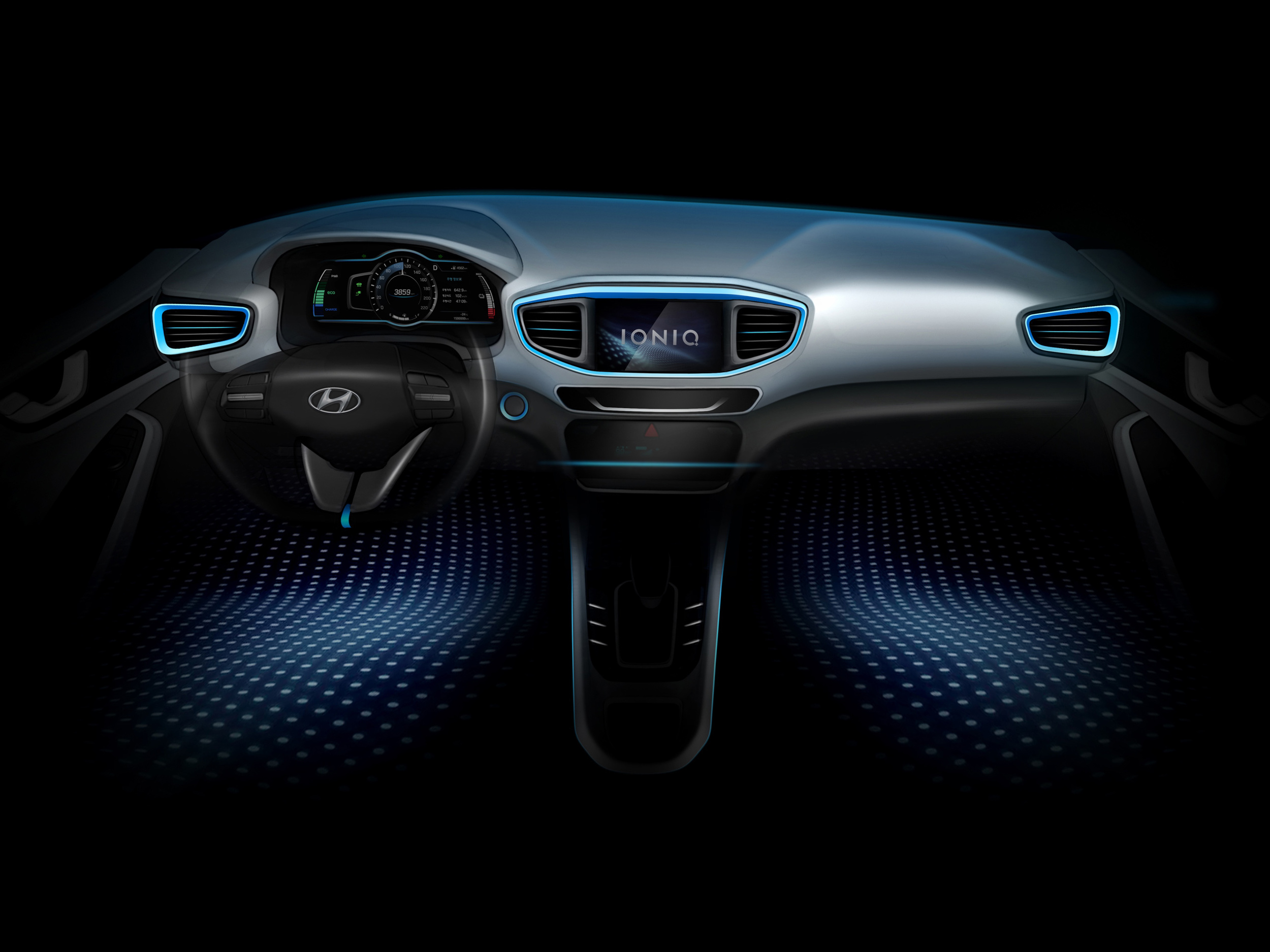
A new rendering of Hyundai’s all-new IONIQ hints at the looks of the alternative-fuel compact vehicle, which is due for launch in early 2016.
Hyundai has confirmed that the IONIQ will be the world’s first car to offer a choice of three ultra-low-emission powertrains: full electric, plug-in gasoline / electric hybrid, or gasoline / electric hybrid.
With a sleek, coupe-like silhouette, Hyundai says the IONIQ will deliver a fun and responsive driving experience, while also meeting the needs of those wishing to reduce the impact their motoring has on the environment.
At the front, it sports the familiar Hyundai hexagonal grille, topped by a gloss-black element that extends outwards to meet new headlamps featuring integrated ‘C’-position lights.
Inside the IONIQ the smooth, clutter-free theme continues. A clear, logical approach has been applied to the layout of control functions, with simple surfaces that make use of eco-friendly materials to convey, says Hyundai, ‘a futuristic yet warm cabin ambience that will appeal to a new generation of motorists’.
The IONIQ’s name references elements of its creation. An ion is an electrically-charged atom, linking to the car’s clever combination of electrified powertrains. The ‘I’ is said to reference the ‘unique offering it brings to the Hyundai range, demonstrating the brand’s environmental commitment and willingness to maximise choice for its customers’. Finally, the Q is depicted in the car’s logo as a visual breakthrough, acknowledging the fresh new approach of this advanced, low-emission model.
Following a world premiere in Korea in January, the IONIQ is due to be shown during March 2016 at the Geneva International Motor Show and the New York Auto Show.
